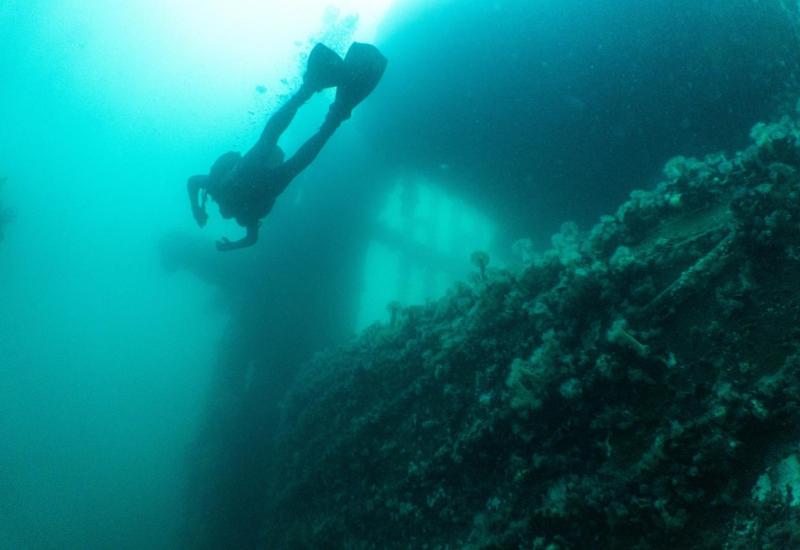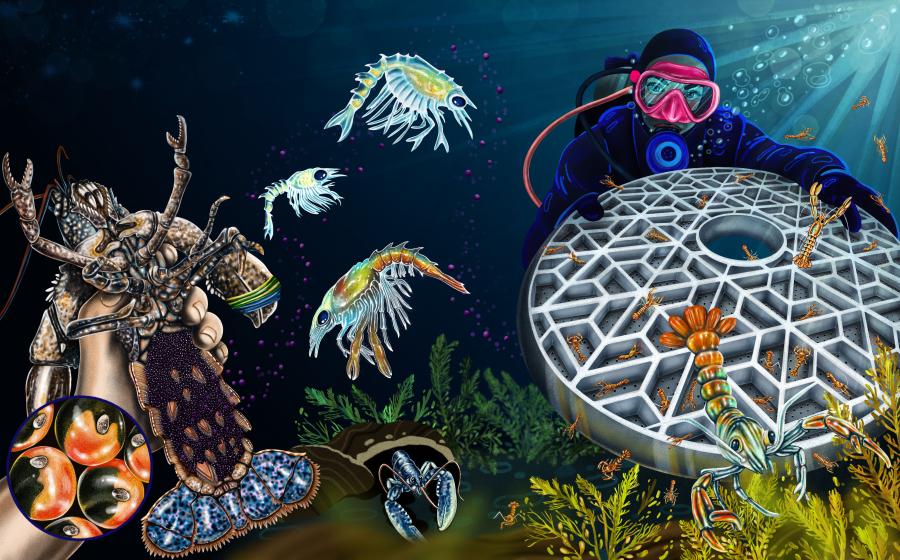4 Dives That Will Get You Hooked on Wreck Diving
^^W^^e dive because we want answers. We start with the need to know what lurks beneath the ocean’s surface. Then, as curiosities extend to wrecks and artificial reefs, the need quickly grows to exploring what lies inside, to witness firsthand the past, as told by the artifacts and stories that remain. Every room, hallway, hold and staircase reveals another layer of what a ship’s past life looked like, and tells how the ocean’s hand reshapes an environment. Some rooms become favorite haunts for goliath grouper. Sometimes dark hallways become synonymous with the eels that take up residence. Beyond the wildlife, the ships themselves corrode, shift, and evolve with time and weather. Storms have the capacity to alter the angle at which a wreck sits, as well as stir the sand and silt to dredge up new artifacts. Every dive is a chance to witness a new telling of the story. Follow these tried-and-true routes that reveal the best of each wreck.

Reef SmartKey Largo, Florida.
The Duane is a weird one,” Dan Dawson says of one of the artificial reefs he regularly dives with Horizon Divers, the scuba center he owns in Key Largo, Florida.
The 327-foot-long U.S. Coast Guard cutter is unusual in that almost every hallway on the main deck has a cutout, or exit point, thanks to the planning that took place prior to its 1987 sinking.
This feature entices more divers to enter given that they don’t need reels or lights to explore inside the ship. It’s one of the easier penetration dives in Florida but still begs an advanced open water certification, plus nitrox for a lengthy, safe dive.
Dawson typically starts the penetration part of the dive by entering midship on the third deck of the superstructure, then swimming all the way to the bow where the windlass room is before turning back around. The way he winds through is a zigzag pattern, going in a door on the starboard side and then out a door on the port side, and then reversing the process.
He favors the in-and-out path not only because it’s a great way for less-experienced wreck divers to build confidence exploring inside, but because it also constantly reaffirms divers of their location.
“On a much bigger reef, like the Spiegel Grove, it’s easy to forget that you’re on a ship,” he says. “But when you are going in and out of the holes, you know for sure you are on a shipwreck because every time you pop back out and look down, you’re seeing sand and fish swimming around.”
The next deck up — where the rooms are darker and there are fewer entry and exit points — offers another path for more-accomplished metalheads. Fluorescent lights still hang from the ceiling but do nothing to illuminate the spaces where big crabs and orange cup corals now thrive.
“It’s all my favorite place,” Dawson says, when trying to choose which deck is his favorite. “Truly though, the deeper inside I get, the more I am in my zone.”

Reef SmartGrand Cayman, Cayman Islands.
Start the dive by dropping into blackness, darker and darker as you descend. “Not many wrecks out there have smokestacks as an access point into the wreck like the Kittiwake does,” says Joanna Mikutowicz, owner of Divetech, a recreational and technical dive center on the island of Grand Cayman, home to the 251-foot USS Kittiwake.
The smokestack deposits divers into a large, light-filled room on the bottom deck in the middle of the ship. Moving toward the bow, the next room up is the engine room. This stretch of ship is large, wide open and filled with light.
“You can see two, three, four exit points at all times,” Mikutowicz says. “It’s really good for beginners.”
Then, as divers reach the end of the superstructure, they find themselves at the Kittiwake’s bow, where “everyone likes to have their Titanic moment,” Mikutowicz continues. “If you swim past the bow, it’s a good place to get perspective on how massive the ship is.”
Then, Mikutowicz leads divers back into the rooms of the middle decks, starting with the galley. Moving farther astern, divers will swim through the smokestack again, this time passing through it horizontally, to find their way to the bathrooms with three showers.
“People always jump in and pretend to bathe,” she says.
Next up is a press — a giant iron of sorts — and then the room with recompression chambers, large enough for divers to climb inside.
The route ends with divers exiting the superstructure on the stern, often welcomed by the sight of schools of horse-eye jacks funneling overhead.
Then Mikutowicz heads back to the bow. “Again, we swim past the smokestack — this time overtop, looking down at the bottom where we began.”
It’s a wreck that can reshape divers’ preconceptions about penetrating.
“A lot of people admit to being terrified of closed spaces,” she says. “But then they get down there and see how open and easy it is, and they try it. Then they usually tell me it’s the coolest thing they have ever done.”

Reef SmartPompano Beach, Florida.
You can tell we have too much fun with this stuff,” says Jeff Torode, owner of Pompano Beach-based South Florida Diving Headquarters.
By “this stuff,” he means all the Easter eggs that he and the team placed inside the Lady Luck before sinking it 1 mile southeast of the Hillsboro Inlet. Start with the laughing card shark and mermaid statues holding court on the top deck, just outside the beginning of the penetration route that Torode likes best.
Fin through that opening, then straight through two rooms — the galley to your left and storage room to your right — until you find the stairs. Climb up two flights until you reach the bridge, where many of the control panels remain.
This is the mountain peak: The perch here affords the most scenic overlook of the wreck.
“When you’re at the wheel looking out, and there’s current running past the ship, it’s like you’re cruising underwater,” Torode says. “It’s unreal.” Look closely enough and, he says, “the growth looks like it’s blowing in the wind.”
Exit the wheelhouse and ascend the three ladder rungs to the upper level where the smokestack sits. Right behind the smokestack are two rectangular holes in the deck.
“You can drop in those holes all the way straight down to the engine room — it’s an awesome shortcut,” Torode says. That drop — inside the ship vents — dips from 80 to 130 feet. “It’s almost like doing a wall dive.”
From this point, divers can either return the way they came, ascend to the next level and exit the doorways on either side, or ascend and exit the doorways on the bridge level.

Reef SmartBarbados.
First the Bajan Queen was a tugboat. Then it became a party boat. Now it sits at the bottom of Carlisle Bay in Barbados, offering divers a sweet and simple penetration route.
Divers tend to start at the stern, then move room by room straight toward the bow.
The room that gets the most questions has lots and lots of drawers. Says Kiera Bloom, instructor with Barbados Blue dive center, “It looks like the Little Mermaid’s cavern, with all of her thingamabobs.”
This main vein through the wreck is easy, suitable for even open water divers with wreck experience. Moving forward, the next room contains a spiral staircase that requires fine-tuned buoyancy, flutter kicks and the ability to snake through a narrow space. Then, as divers ascend the stairs, they’ve exited the ship.
Because the ship is so shallow, at just 35 feet deep, divers can choose to make a second pass.
“When you first drop in, you can choose the main path that everyone takes, or you can veer to the right or left,” Bloom says. “These routes are a little darker, and slightly creepier, which adds to the excitement.”
Along these side routes, eels dwell among the supports in the floor. Thanks to the darkness, odds are better for encountering spotted drums, high hats and slipper lobsters.
Because it’s such a straightforward penetration route, it’s among Bloom’s favorite night dives. “With lobsters crawling all over it and orange cup corals blooming everywhere, it looks like a totally different shipwreck,” she says.










